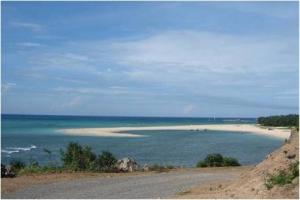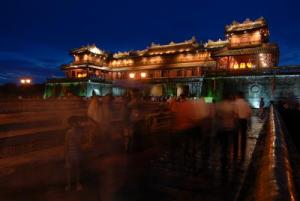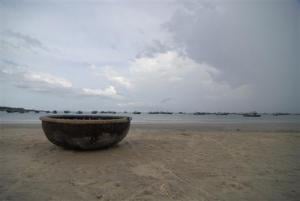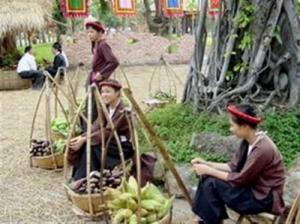Phu Quy Island

120 kilometers southeast of the Phan Thiet Sea, lies ten beautiful islands which comprises the known Phu Quy District. From the range of islets, Phu Quy Island is deemed the largest with 16.5 km2 in area and a population of about 25,000. With its long stretch of white sandy beaches and dense coral reefs, only the rocky, northern half of the island is inhabited. Endowed with beautiful landscapes which include vast rows or casuarinas trees, the entirety of the island is very pristine.
Though the place holds a lot of beautiful sceneries and important cultural sites, the speedier development of its neighboring islets have helped Phu Quy maintain its paradise-like visage and its pure state. With cool climate year-round, crystal-clear waters and fascinating coral reefs, the island is a great place to keep close touch with nature and enjoy a calm and serene atmosphere ideal for summer getaways or romantic settings.
Among the places to see around the island is the famous lighthouse that sits on Cam Mountain. Not only the lighthouse provides tourists the best view of the island’s romantic landscapes and beautiful rock formations, the people in the island also take pride on it as it is one of the only two lighthouses in the country that runs on solar energy. On the same mountain lies the Linh Buu Pagoda, one of the many pagodas and temples that have graced the island for so long. An Thanh Temple which holds remains of gigantic whales worshipped by the locals along with the 18th century-built Linh Quang temple are two of the nationally-recognized cultural-historic sites embedded in this beautiful place.
Apart from that, as Phu Quy’s name means “rich and precious”, the island indeed has vast reserves of mineral resources and perfect fishing conditions. In fact, its waters are considered the most important fishing grounds in the central coast of Binh Thuan province where a wide and diverse marine life dwells in. Snappers, groupers, tunas and sharks are among its most common products, yet the abundance of squid makes it the island’s specialty.
Viewing the island from the north, it resembles giant mackerel emerging from the sea, thus, Phu Quy is commonly referred to by the local residents as Cu Lao Thu (Mackerel Island).
What To Expect
Because of its distance, Phu Quy’s major sources of electricity are diesel-driven generators. As the place do not have disco bars and active night life, with a few karaoke bars around however, power in the whole island is switched off every night close to midnight until early morning the next day. However, along with the recent developments around, a network of electricity is developed on top of the modern road systems, schools, medical stations and tourism services put up in the locality.
The island may be pretty far from Vietnam’s mainland, but ATM machines are available as well as hospitals with X-ray services. They also provide a decent mobile phone coverage and internet cafes are easily accessible. As the island does not have as active tourism activities than its neighbors, there are only few guest houses available at present (about 100,000 VND for a night’s stay). Visiting the market gives you opportunity to enjoy the island’s freshest catch and have it cooked for an extra fee. You can take a nice walk along the shorelines while enjoying the stunning view of the beach, or perhaps read a good book or take the opportunity to just simply relax and enjoy the peace and quiet away from the chaotic city noise. Friendly villagers often approach you and offer coconut milk drinks for sale, sugar canes and freshly cooked Cha Gio (Vietnamese spring rolls).
Getting Around the Island
There is no public transport available in Phu Quy, yet renting a motorbike (80,000 VND for a full day, or 50,000 for half-a-day, without fuel) is the easiest way to get around the island. At present, better roads are constantly developed and more vehicles might be expected in the near future.
Traveling to Phu Quy
You can travel via road to Phan Thiet, and from there you can take the ferry boat bound for Phu Quy (140′000 VND one way). Since schedules of ferries greatly depend on weather conditions, there are no fixed departure schedules. On favorable weathers, the boat departs from Phan Thiet harbor every three days.
A phone call to the harbor better helps you plan your trip ahead, but if you have the chance to drop by, they usually put up a sign on the waiting boat which says when the next departure is expected. It is advised to come an hour early before the departure to find a comfortable seat since the travel could get uncomfortable due to cargoes taken aboard. Normally, the trip takes about 6 hours, but when the waters are not calm and weather is not so favorable, it could stretch up to over 9 hours. Don’t forget your visas since registration of passports on their immigration office is required upon arrival.









